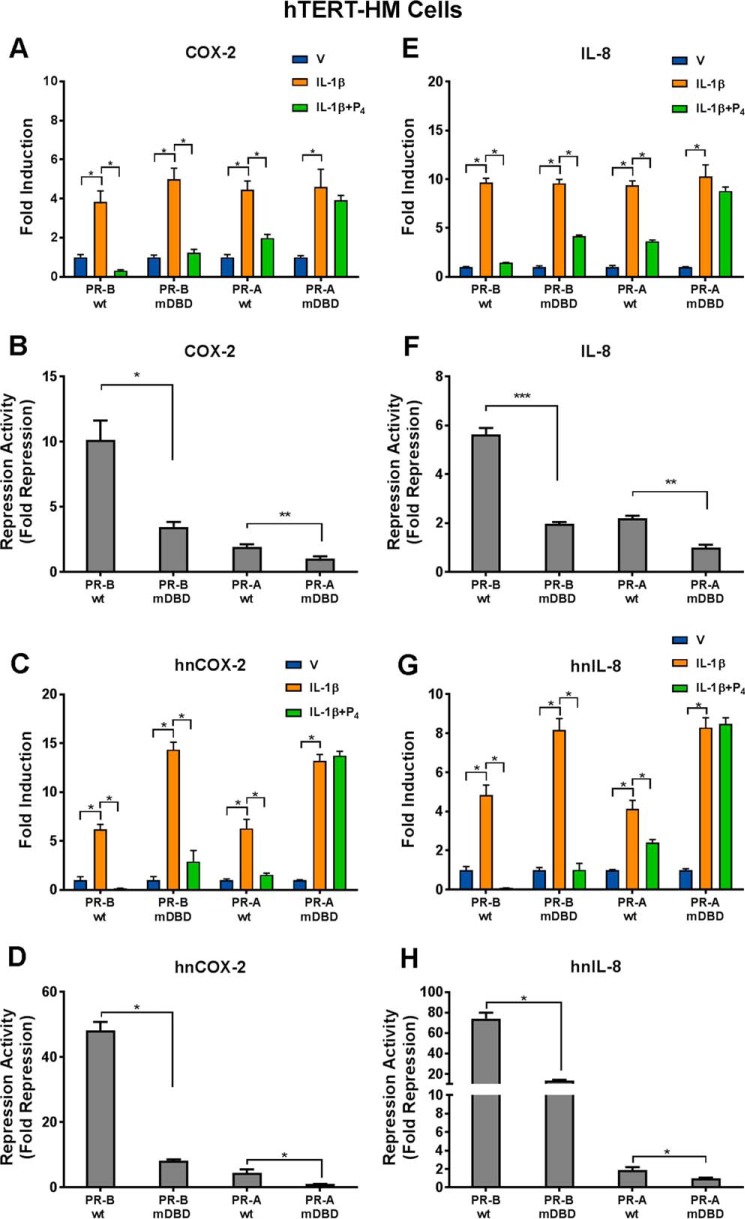Figure 3.
The PR DNA-binding motif plays an important role in P4-mediated transrepression of COX-2 and IL-8 promoter activity in human myometrial cells. hTERT-HM myometrial cells lines stably expressing either PR-BWT, PR-BmDBD, PR-AWT, or PR-AmDBD and cultured in the absence or presence of IL-1β with or without P4 were utilized. RT-qPCR was used to analyze expression of endogenous COX-2 (A–D) and IL-8 (E–H). A, B, E, and F, cells were treated with DMSO vehicle (V), IL-1β (10 ng/ml), or IL-1β + P4 (100 nm) for 2 h. Total RNA was extracted and reverse-transcribed, and the relative abundance of COX-2 (A) and IL-8 (E) mRNA transcripts was determined by qPCR. C, D, G, and H, to examine the effects of P4 on IL-1β induction of nascent COX-2 and IL-8 hnRNA expression, the uridine analog EU (200 μm) was added to the medium at the time that cells were placed in DMSO, IL-1β, or IL-1β + P4. After 40 min of treatment, total RNA was extracted, and the EU-labeled nascent RNA was isolated and reverse-transcribed. The relative abundance of nascent COX-2 (C) and IL-8 (G) mRNA transcripts was determined by qPCR. B, D, F, and H, -fold repression activity was calculated by comparing the levels of RNA expression in cells treated with IL-1β alone with the RNA levels after treatment with IL-1β plus P4. Data shown in A–H are the mean ± S.E. (error bars); significant (*, p < 0.05; **, p < 0.01; ***, p < 0.001) difference between samples.

